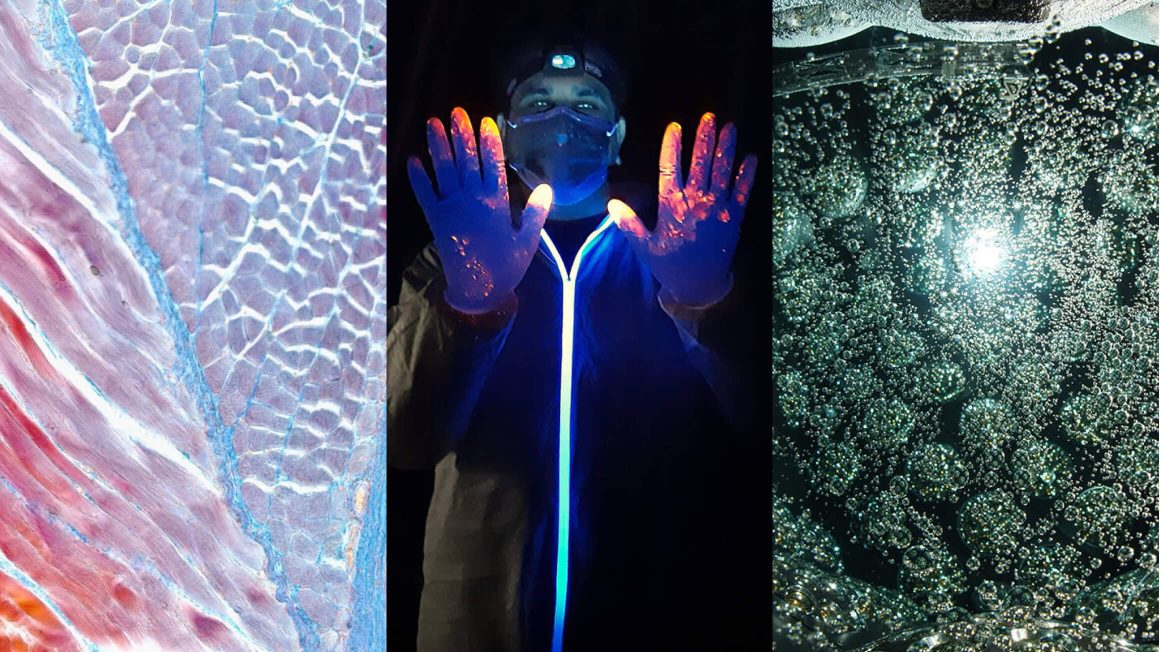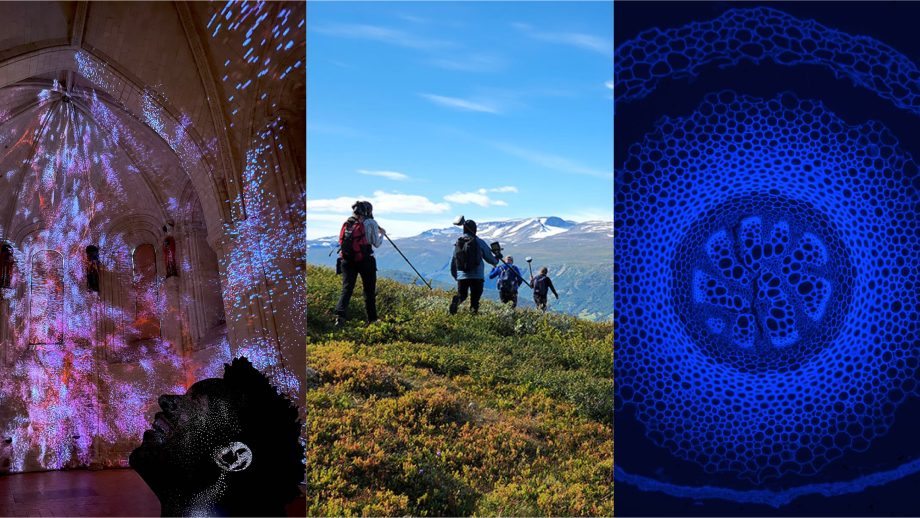From northern skies to underwater scenes, this year’s winners of Research in Focus showcased the vividness and originality of research taking place at The University of Winnipeg.
Winners of the second annual research photography competition were announced in front of a packed house at the Three-Minute Thesis finals on March 13.
An interdisciplinary panel of judges selected first-place and runner-up winners in six categories, as well as a grand prize winner. A full photo gallery can be found on the Research in Focus website.
Moments like these remind me why I love fieldwork—sometimes you get more than just data.
Anouska Agarwal
“I was thrilled to see the diversity of winners this year, with at least one undergraduate, one graduate student, one staff member, one faculty member, as well as an alumna and alumnus, all receiving an award,” said Akshi Malik, a Program Officer in UWinnipeg’s Research Office, which organized the competition. “It’s a true reflection of the breadth and talent within our research community.”
Participation in Research in Focus reached new heights this year. More photos were submitted (64, up from 53 last year) and more votes were cast for the People’s Choice Award (over 800, up from 475).
“Research in Focus really demonstrates how a single picture can capture the innovative and creative work that our researchers dedicate so much effort to,” Malik said. “We’re excited to announce that the competition will be back again next year to continue showcasing the incredible research at UWinnipeg.”
Meet the winners
Malcolm Reimer, a graduate student in the MSc in Bioscience, Technology, and Public Policy program, won the $500 grand prize. Reimer’s submission, “Ultraviolet Glow-Up,” also won in the Faces of Discovery and Best Description categories.
The compelling, eerie image depicts protective gear glowing in the dark after Reimer and a colleague brushed ultraviolet-fluorescent powder onto endangered bats. The powder is used to track bats as they fly to their summer roosts. Reimer said the image reminded him of a glow bowling alley.
The Artistry in Research category was won by Anouska Agarwal, a graduate student in the MSc in Bioscience, Technology, and Public Policy program, who also had a bat-themed submission. “Under Aurora’s Watch: A Night with Bats” shows a stunning aurora borealis display during a fieldwork trip to study little brown bats.
“While I was busy capturing bats, nature decided to put on a show of its own with the Northern Lights,” Agarwal wrote. “Moments like these remind me why I love fieldwork—sometimes you get more than just data.”
Mohammad Anas Shoebullah Khan, a graduate student in the Master in Environmental and Social Change (MESC) program, won the Community Catalysts category with “Dried Fish for Life!” which depicts a bamboo basket of dried fish in Gujarat, India. Khan’s research examines human rights issues among fishworkers there.
“For the Adivasis, dried fish holds cultural value especially during ‘Panchora’ ceremony, where a newborn is named by the village midwife. A feast with dried fish follows, symbolizing its role in celebrating new life,” Khan explained in the photo’s caption.
Dr. Blair Jamieson, Professor and Chair of the Department of Physics, won the Framing Fieldwork category with an image taken underwater.
“This photo is from one of eight underwater cameras built at UWinnipeg and installed on the CERN Water Cherenkov Test Experiment,” Jamieson explained. “The photo is from the first week with water in the experiment when an air leak into the detector was being fixed. The larger bubbles of air that formed on the detector each make a lens that views several of the photosensor modules inside the detector.”
Emily Fedora, an undergraduate student majoring in Bioanthropology, topped the Powered Perception category with “Valley of the Joint,” a microscopic image of connective tissue and bone that, at a glance, could be mistaken for a bird’s-eye view of a wilderness landscape. Fedora said the image reminds us “that nature’s beauty can be found within.”
The Viewer’s Choice category was won by Chathuri Mudalige, a graduate student in the MESC program. Mudalige’s colourful image, “A Toxic Glimpse: The Fate of Liver Cells Under Chemical Stress,” depicts human liver cells exposed to a harmful chemical contaminant under a microscope.
Research in Focus is UWinnipeg’s annual research photography competition, open to UWinnipeg students, faculty, staff, retirees, and alumni. Established in 2024, it visualizes the breadth and depth of research carried out by the UWinnipeg community, and tells the story of what researchers have witnessed, discovered, or created as they pursue academic excellence.





